SEED Grants 2016
Assessing the Knowledge Frontier -- Cyber Vulnerability in U.S. Nuclear Facilities
| Kathleen Araújo SBU, Technology and Society Susan Pepper BNL, Non-proliferation and National Security Kerstin Kleese Van Dam BNL, Computational Science Initiative Rhong Zhao CEWIT Biays Bowerman BNL Richard Ohlsen BNL |
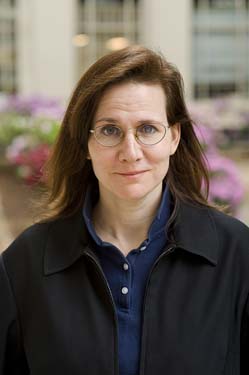 Kathleen Araújo |
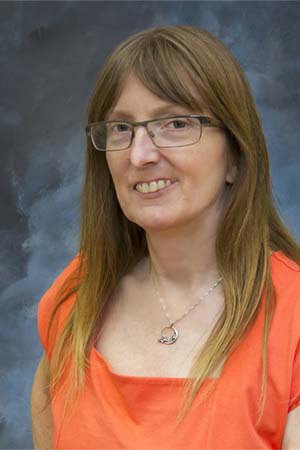 Susan Pepper |
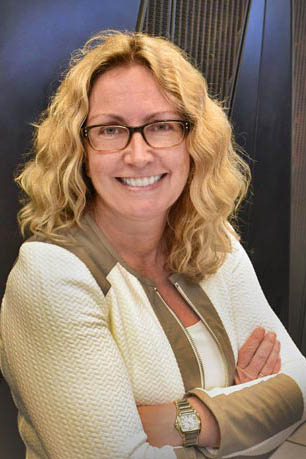 Kerstin Kleese Van Dam |
Cyber threats have grown in number and sophistication, with security at nuclear facilities being an area of particular sensitivity. Among associated risks, adversaries can acquire access to local networks and disable physical protection measures, compromising nuclear plant instrumentation and control systems.
Recognizing the unique complexities of cyber-based concerns for nuclear operations, this study aims to develop a strategic roadmap of the current knowledge frontier to inform decisions on standards, research, and other aspects of oversight. In line with this objective, Kathleen Araújo, Susan Pepper, and Kerstin Kleese Van Dam will partner to leverage cross-cutting strengths of Stony Brook University and Brookhaven National Laboratory in regulatory decision-making, nuclear security, and computational sciences.
Performance Portability Strategies for HPC Applications Looking Forward to Exascale Computing
| Barbara Chapman Institute for Advanced Computational Science, SBU Meifeng Lin Computational Science Initiative, BNL Nick D'Imperio Computational Science Initiative, BNL |
 Barbara Chapman |
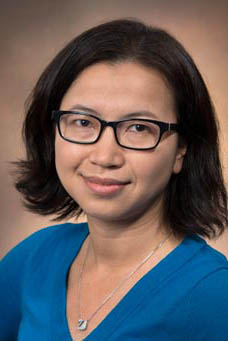 Meifeng Lin |
Computer architectures and high performance computing (HPC) platforms have experienced a dramatic paradigm shift in the past decade with increasing levels of parallelism and heterogeneity. This trend will continue for the upcoming exascale computers expected in the 2020-2023 time frame. It is critical for the success of the exascale program that scientific applications be able to run efficiently on as many exascale platforms as possible. However, existing HPC applications typically have been written with a specific target architecture in mind. Migration to a different system often means significant redesigning and rewriting of the application codes, inevitably reducing productivity and delaying the scientific output. We will leverage the SBU PI's expertise in programming models and compiler technology and BNL PI's expertise in computational sciences and HPC to work with domain scientists, application developers and system software researchers to investigate performance portability strategies for HPC applications. Systematic evaluations using existing tools will be performed with two potential real-world applications central to the SBU and BNL missions: Lattice QCD and Strongly Correlated Materials. This project will provide the enabling capabilities for existing applications to migrate easily to different computing architectures, and construct a roadmap for the design of next-generation HPC applications with performance portability. The feedback we provide to the system software researchers will help shape next-generation system software infrastructure that is indispensable for exascale computing and extreme-scale scientific discovery.
In-Situ Studies of Interfacial Corrosion Processes at Grain Boundaries and Crack Tips
| Clive Clayton Material Science and Engineering, SBU Amy Catherine Marschilok Material Science and Engineering, SBU Simerjeet Gill Nuclear Science and Technology Department, BNL Hugh Isaacs Nuclear Science and Technology Department, BNL Kotaro Sasaki Department of Chemistry, BNL |
 Clive Clayton |
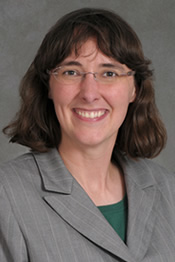 Amy Catherine Marschilok |
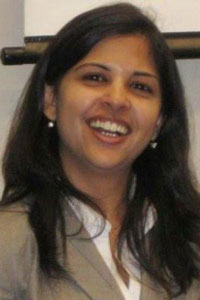 Simerjeet Gill |
Corrosion and oxidation are often associated with spontaneous failure of industrial materials. This inherently dangerous situation drives the continuous pursuit of fundamental knowledge of processes leading up to such failure. To date, the ability to monitor oxidation reactions driving intra-granular and inter-granular corrosion and cracking at the atomic and nanoscale remains far below the level needed to elucidate the underlying physics that governs these phenomena due to our lack of high-resolution, ultra-fast characterization tools. This project will develop a multi-modal approach to understand interfacial processes associated with corrosion at grain boundaries and crack tips using advanced multi-scale techniques at BNL and SBU.
In-situ X-ray Tomography, Chemistry, and Mineralogy of Samples Returned from Mars
| Joel Hurowitz Department of Geosciences, SBU Juergen Thieme Photon Sciences, BNL |
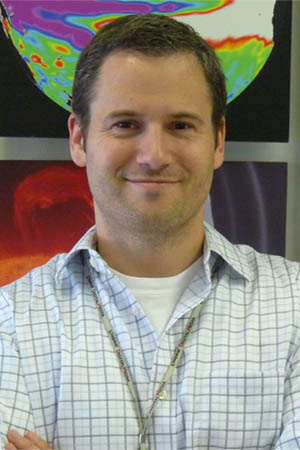 Joel Hurowitz |
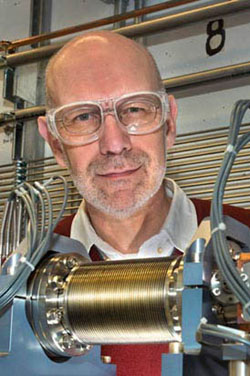 Juergen Thieme |
Beginning in the year 2020, NASA will embark on an ambitious, multi-mission campaign to Mars with the objective of returning a scientifically selected cache of rock, regolith, and atmosphere samples from the Red Planet for analysis in laboratories on Earth. The primary goal of these analyses will be to determine whether or not Mars was ever host to ancient microbial life. There is an exciting potential opportunity for Stony Brook University and Brookhaven National Laboratory to step into a pivotal leadership role in the analysis of samples returned from Mars, by providing the very first measurements of these samples after they are returned to Earth. The high X-ray brightness of the National Synchrotron Light Source-II (NSLS-II) provides a unique and critical capability to perform in-situ assessments of sample integrity (using X-ray tomography), chemical composition and elemental distribution (using X-ray fluorescence), and mineralogy (using X-ray diffraction) immediately after samples are returned to Earth, but before they are unsealed from their collection tubes. Our proposal effort will begin to develop the techniques necessary to perform these measurements on analogue samples sealed in titanium alloy tubes in preparation for the analysis of samples returned from Mars. The potential scientific understanding to be achieved with this cache of returned samples is likely to equal or exceed that of the Apollo lunar sample archive, which continues to yield new insights on the history of the Solar System, over 40 years after they were returned to Earth.
A Deep Learning Approach to Mitigate Reconstruction Artifacts in Low-Dose Transmission Electron Tomography
| Klaus Mueller Computer Science, SBU Huolin Xin Center for Functional Nanomaterials, BNL Qin Wu Center for Functional Nanomaterials, BNL |
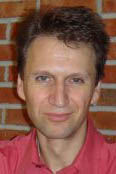 Klaus Mueller |
 Huolin Xin |
 Qin Wu |
The spatial, compositional, bonding, and time-domain complexity of the transformation of materials under the solid/gas reaction, particularly with heterogeneous nucleation involved, highlights the need to increase the dimensionality of transmission electron microscopy data sets beyond conventional projection imaging and the acquisition of image series, i.e. x-y-t. Because projection images can be misleading or inconclusive for inhomogeneous systems, it is much desired to include all three spatial coordinates, x, y, and z, into the data set without losing the time and energy resolution. However, a key stumbling block that had held back progress in achieving this is the rather slow process in acquiring electron tomography data for the retrieval of depth information on the atomic- and nanoscale. To overcome this barrier, one of the BNL members of this project, co-PI Xin, has been developing high-throughput and fewer-tilt electron tomography for acquiring four-dimensional data sets. However, the reduction in dosage and the use of fewer tilt-image tomography results in reconstructions of poor quality. To overcome these barriers, in this seed project, we will explore new methods in the rapidly emerging field of deep learning with convolutional neural networks (CNNs) for effective mechanisms that can be adapted for this purpose.
Diamond particle detectors for therapeutic medical dosimetry
| Erik Muller Materials Sciences and Engineering, SBU John Smedley Instrumentation Division, BNL Steve Peggs Collider-Accelerator Department, BNL Samual Ryu Radiation Oncology, Chair, SBU |
 Erik Muller |
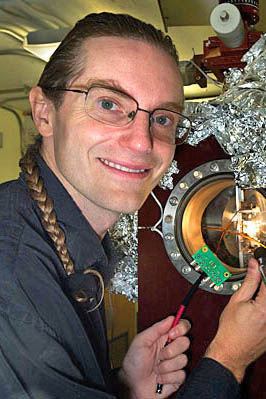 John Smedley |
Accurate and robust dosimetry of the therapeutic beam entering a patient is critical in ensuring safety and treatment efficacy, with the most important question being: is the planned flux of beam, with the planned size, being delivered at the correct location and with the correct energy? Dosimetry provides the key performance information at the interface between the beam and the patient. Advances towards simpler, more robust, and more accurate low-flux dosimetry systems continue to be important and desirable. Diamond has proven to be an exemplary diagnostic material for synchrotron x-ray beams; the goal of this project is to transition our success with x-ray diagnostics into diagnostics for high energy photon, proton and ion beams for radiation therapy. We anticipate producing two prototype dose monitors, one of which will also be capable of logging beam position in real time. We will also evaluate the radiation damage to these devices in high energy and high flux environments.
Baryon Mapping Experiment: From Prototype to Full Realization
| Neelima Sehgal Physics and Astronomy, SBU Anže Slosar Cosmology and Astrophysics, BNL Paul O'Connor Instrumentation Division, BNL |
 Neelima Sehgal |
 Anže Slosar |
Stony Brook University (SBU) is seizing an exciting opportunity to get in on the ground floor of a cutting edge Cosmology experiment in which Brookhaven National Laboratory (BNL) has already invested over 1 million dollars in Laboratory Directed Research and Development (LDRD) funds. BNL’s PI on this SEED proposal is a PI and a co-PI on two LDRD awards to design a next-generation Cosmology experiment that will be the flagship experiment for the BNL Cosmology program in the mid-2020s after the Large Synoptic Survey Telescope (LSST) mission is completed. The BNL Cosmology group has identified 21-cm intensity mapping as a strategically good match for BNL’s capabilities and has embarked on an ambitious program to design and run a pathfinder prototype experiment on the BNL site to help build a solid case for a medium size Department of Energy (DOE) funded experiment costing about 100-200 million dollars. BNL can greatly benefit from collaboration with Cosmology experts at SBU and from SB graduate student involvement to perform a number of key analyses. The construction of the prototype is in progress, and observing will commence in the summer of 2016. This project has excellent synergies with both the DOE funded LSST experiment, in which BNL is heavily involved, and with the DOE sponsored CMB-Stage4 experiment, in which SBU is heavily involved. To harness these synergies, this proposal will fund one year of an SBU graduate student co-supervised by Prof. Neelima Sehgal and Dr. Anže Slosar. The graduate student’s project will be comprised of two goals: i) to enable the success of the prototype by helping to reduce and understand the data coming from it and ii) to use the expertise gained from the prototype to help engineer a design for a competitive full realization of the experiment.
